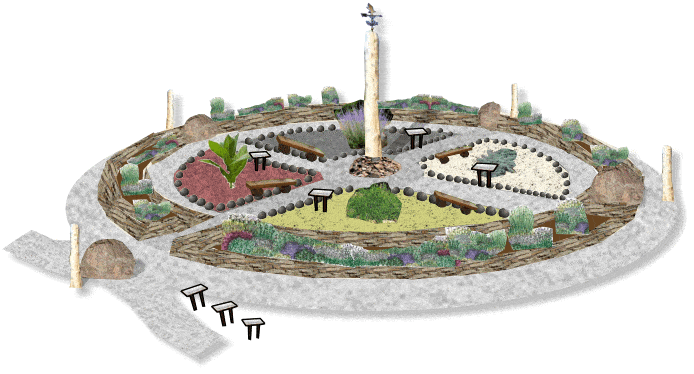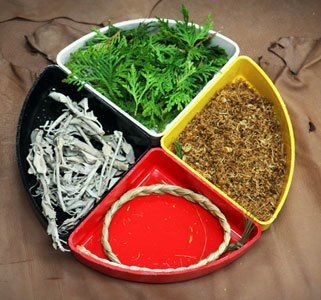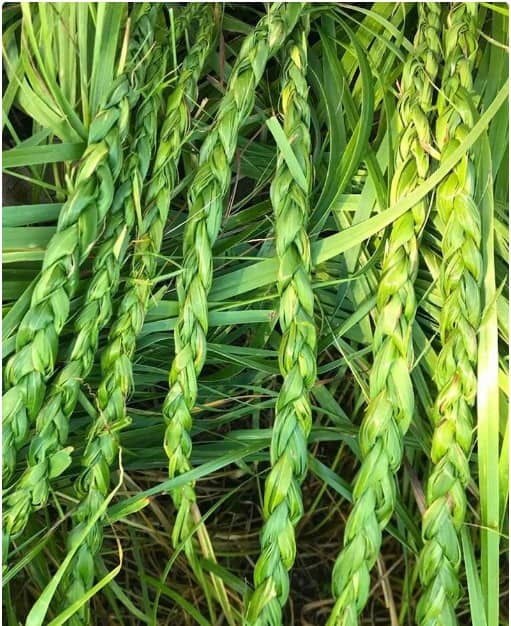

As far as the eye can see, the Plants grow, working many wonders. They sustain many life forms. With our minds gathered together, we give our thanks and look forward to seeing Plant life continue for many generations to come.
-Extract from Haudenosaunee Thanksgiving Address
I have always had a special interest in Indigenous culture-their rituals, history, teachings, and architecture. In fact, my favourite building in Canada is the Museum of Civilizations by architect Douglas Cardinal. As an Indigenous architect, Cardinal places value on approaching his design work by drawing inspiration from the natural world. Working at a landscape architecture firm has naturally led me to research and reflect upon how Indigenous values and knowledge about specific plants may inform our landscapes as well as our everyday lives.
All plants for Indigenous Peoples, including the First Nations, Inuit and Métis have a specific role in the universe, providing for us in their own way. The four sacred plants – tobacco, sage, sweetgrass, and cedar, for instance, are medicinal plants that are culturally symbolic while offering some health and wellness benefits.


The above images are representations of the medicine wheel, symbolizing the four plants that are associated with specific colours and directions.

It is believed that tobacco is the first plant that the Creator gave to Native people, activating all the plant spirits. Traditional tobacco was given to us so that we can communicate with the spirit world. It opens up the door to allow that communication to take place. When we make an offering of tobacco, we communicate our thoughts and feelings through the tobacco as we pray for ourselves, our family, relatives and others. -Anishnawbe Health Toronto
Tobacco can be grown in non-temperate climates, and can be grown easily. The plant has a fibrous root system and a cylindrical stem which terminates in a cluster of over 150 funnel-shaped, pink flowers with 5 petals. The leaves are 23-30 cm wide and 55-80cm long that are arranged as a spiral on the stalk and are oval with a pointed apex.

Because it is more medicinal and stronger than sweetgrass , it tends to be used more often in ceremonies. –Anishnawbe Health Toronto
Sage is found in fields of grass and looks like straight stems with light green at the top of the leaf and grey at the base. This plant has a very strong odor that stays even after it is dried. It is best to pick sage right before fall. Since sage is a strong medicinal plant that is often used as smudge (smudging is a tradition in many Indigenous cultures, which involves the burning of one or more of medicinal plants) in ceremonies. This act releases any negative energy from homes, objects, and even from one’s mind. Some families hang it above their door for decoration and good luck. Sage makes a nice tea, which helps with digestion. It is also adds extra flavour when used as a spice for cooking fish or stew.

Sweetgrass is the sacred hair of Mother Earth. Its sweet aroma reminds people of the gentleness, love and kindness she has for the people. -Anishnawbe Health Toronto
Sweetgrass is found near rivers and lakes and looks like wild green grass, except purple at the base of the stem with pure white roots. The leaves grow from the bottom and are rough to the touch. Sweetgrass is known for its strong sweet, vanilla-like smell. and with light shining down on the leaf, a red tinge appears. Indigenous people believe that since sweetgrass is difficult to find, it will only be found when one’s soul is ready to find it. Braided sweetgrass is used in healing circles, smudging, and purification ceremonies, eliciting a calming effect. This sacred plant is often hung above doorways to bring peace and wellness and may be brewed as tea.

When cedar is put in the fire with tobacco, it crackles. When it does this, it is calling the attention of the spirits to the offering that is being made. -Anishnawbe Health Toronto
Cedar is found in humid climates and looks like flat leaves that fan out with branches that curve up at the ends. Cedar has a distinct smell from other trees. For Indigenous Peoples, while red cedar is used as smudge in traditional ceremonies, in general, all types of cedars can be used for calming baths and seen as a powerful way to remove trauma. Cedar tea helps with recovery from flus and colds.
Ever wonder what an Indigenous Garden entails (besides planting the four sacred medicinal plants-sage, sweetgrass, tobacco, and cedar)? Check out the video below to find out!
